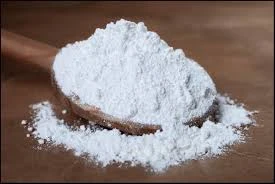
Exploring the Benefits and Uses of E322 Emulsifier in Food Products
Understanding E322 Emulsifier A Comprehensive Overview
Emulsifiers play a crucial role in the food industry by helping to stabilize mixtures that normally do not combine well, such as oil and water. One such emulsifier is E322, which is derived from lecithin. Lecithin can be sourced from soybeans, sunflowers, and egg yolks, making it a versatile ingredient in various food products. This article aims to explore the characteristics, functions, uses, and safety of E322 emulsifier.
What is E322?
E322 is classified as an emulsifier and is frequently labeled as lecithin in ingredient lists. Lecithin is a naturally occurring phospholipid, which is essential for cellular function and adds a smooth texture to foods. Its hygroscopic properties enable it to stabilize mixtures, preventing separation and thus enhancing the shelf life of products.
How Does E322 Work?
The structure of lecithin molecules contributes to its emulsifying properties. Lecithin consists of hydrophilic (water-attracting) and hydrophobic (water-repelling) components. When mixed with oil and water, lecithin molecules arrange themselves in a way that allows them to surround droplets of oil, keeping them suspended in the water phase. This creates a stable emulsion that contributes to the texture and mouthfeel of various food products.
Applications of E322
E322 is widely used across the food industry due to its multifunctional capabilities. Some common applications include
1. Baked Goods Lecithin helps improve the texture and moisture retention of bread and pastries. It contributes to a softer crumb and extends the shelf life by inhibiting staling.
e322 emulsifier

2. Confectionery In chocolates and candies, E322 assists in emulsifying cocoa butter, producing a creamy texture that enhances the overall flavor experience.
3. Dairy Products Lecithin is often added to creamers, margarine, and ice creams to prevent separation and improve mouthfeel.
4. Salad Dressings It stabilizes oil-and-vinegar mixtures, preventing them from separating and ensuring a consistent product for consumers.
In addition to food applications, E322 is also found in non-food products, including cosmetics, pharmaceuticals, and dietary supplements, highlighting its versatility.
Is E322 Safe?
The safety of E322 has been assessed by various regulatory agencies around the world, including the Food and Drug Administration (FDA) and the European Food Safety Authority (EFSA). Lecithin is generally recognized as safe (GRAS) when used in food products, as it is a natural substance found in many foods. However, individuals with soy allergies should be cautious, as soy lecithin is a common source of E322.
Conclusion
E322 emulsifier, derived from lecithin, serves as an essential ingredient in the food industry, contributing to the texture, stability, and overall quality of various products. Its ability to enhance food formulations while maintaining safety makes it a popular choice among manufacturers. Understanding the properties and applications of E322 can help consumers make informed choices about the foods they consume, particularly as the demand for clean-label products continues to rise. As with any food additive, while E322 is deemed safe for use, it is always prudent for individuals with dietary restrictions or allergies to read labels and consult with health professionals when necessary.
-
Sodium Dichloroisocyanurate Safety Handling ProtocolsNewsJul.29,2025
-
Mining Chemicals for Copper Extraction Processes GuideNewsJul.29,2025
-
Fertilizer for Sale Shipping and Storage TipsNewsJul.29,2025
-
Dimethyl Disulfide as Sulfurizing AgentNewsJul.29,2025
-
Benzotriazole Safety Data Handling and Storage GuidelinesNewsJul.29,2025
-
Ammonium Bicarbonate Safety Handling Storage GuidelinesNewsJul.29,2025
-
The Transformative Role Of Trichloroisocyanuric Acid in Water TreatmentNewsJul.23,2025
Hebei Tenger Chemical Technology Co., Ltd. focuses on the chemical industry and is committed to the export service of chemical raw materials.
-

view more DiethanolisopropanolamineIn the ever-growing field of chemical solutions, diethanolisopropanolamine (DEIPA) stands out as a versatile and important compound. Due to its unique chemical structure and properties, DEIPA is of interest to various industries including construction, personal care, and agriculture. -

view more TriisopropanolamineTriisopropanolamine (TIPA) alkanol amine substance, is a kind of alcohol amine compound with amino and alcohol hydroxyl, and because of its molecules contains both amino and hydroxyl. -

view more Tetramethyl Thiuram DisulfideTetramethyl thiuram disulfide, also known as TMTD, is a white to light-yellow powder with a distinct sulfur-like odor. It is soluble in organic solvents such as benzene, acetone, and ethyl acetate, making it highly versatile for use in different formulations. TMTD is known for its excellent vulcanization acceleration properties, which makes it a key ingredient in the production of rubber products. Additionally, it acts as an effective fungicide and bactericide, making it valuable in agricultural applications. Its high purity and stability ensure consistent performance, making it a preferred choice for manufacturers across various industries.











